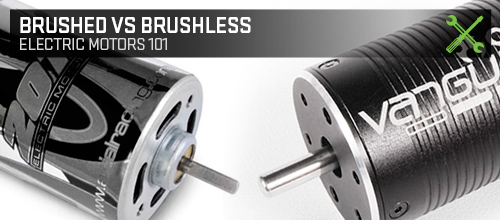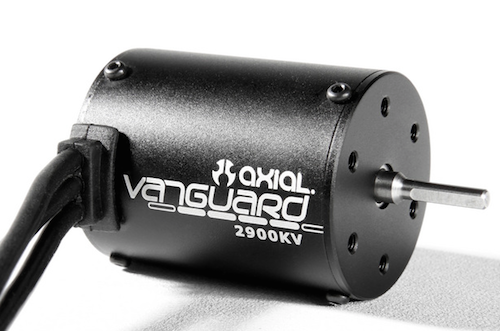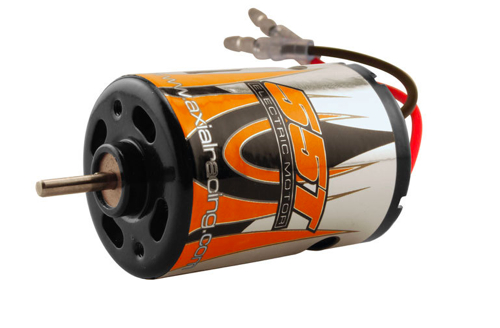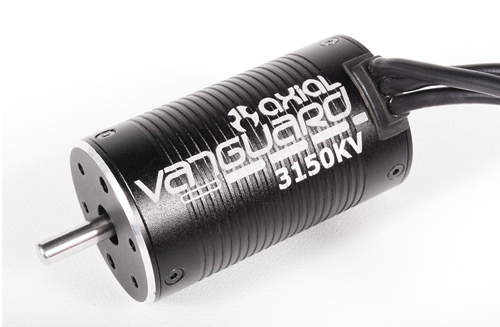Posted: 9/30/14


Axial Racing RTR vehicles come with either two types of motors, brushed or brushless. To better understand why Axial offers the two different types, it's helpful to know the key differences between the two designs. As you'd expect, both designs have their key differences and their advantages.

Brushed
Brushed motors are the older technology of the motor world, but that doesn't mean they don't have their advantages. The biggest advantage is low cost. Brushed motors simply deliver a lot of bang for very little buck. Brushed motors come in many versions; Axial uses a sealed end bell design with bronze bushings (as opposed to ball bearings). This setup is highly robust. So, what makes a brushed motor brushed? In simplest terms, brushes are hard conductors (one positive and one negative) that brush up against the spinning commutator in the center of the motor with positive and negative magnets on the inside of the can. These brushes are a wear item as there is physical contact and the parts spin at an extremely high rate, but if the motor is kept dry and clean, it will last a very long time. Best of all, Axial's brushed motors list for only $16 to $19, depending on the turn selected. Another advantage of brushed motors is its throttle response. Brushed motors provide excellent slow speed control making them a great choice for rock crawlers where precise driving is key.

Brushless
Brushless motors are basically built in the opposite manner of brushed motors. If you have a good understanding of brushed motors, think of brushless motors as the inside out version. The magnets spin and the coils of wire are inside the wall of the motor's can or main casing. They don't require brushes, and are thus appropriately known as brushless. An advantage of brushless motors is that they have a much longer lifespan since the main wear components have been eliminated. Brushless motors, such as the Vanguard 3150KV, are also more efficient, so they can provide best use of power (more runtime) and make more power. Axial currently offers two brushless motors. One is 2900KV and the other is 3150KV. The higher the KV rating, the faster the motor. This is the opposite of how brushed motors are labeled. Brushed motors are typically labeled in turns, and the larger the number of turns, the slower the motor but more powerful the motor.